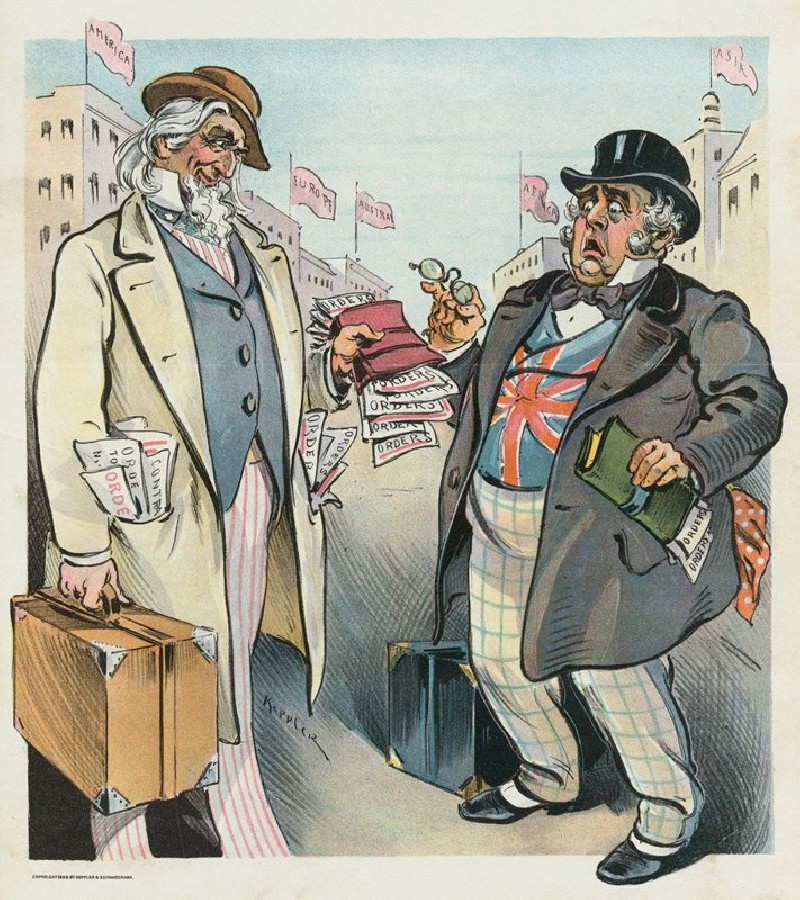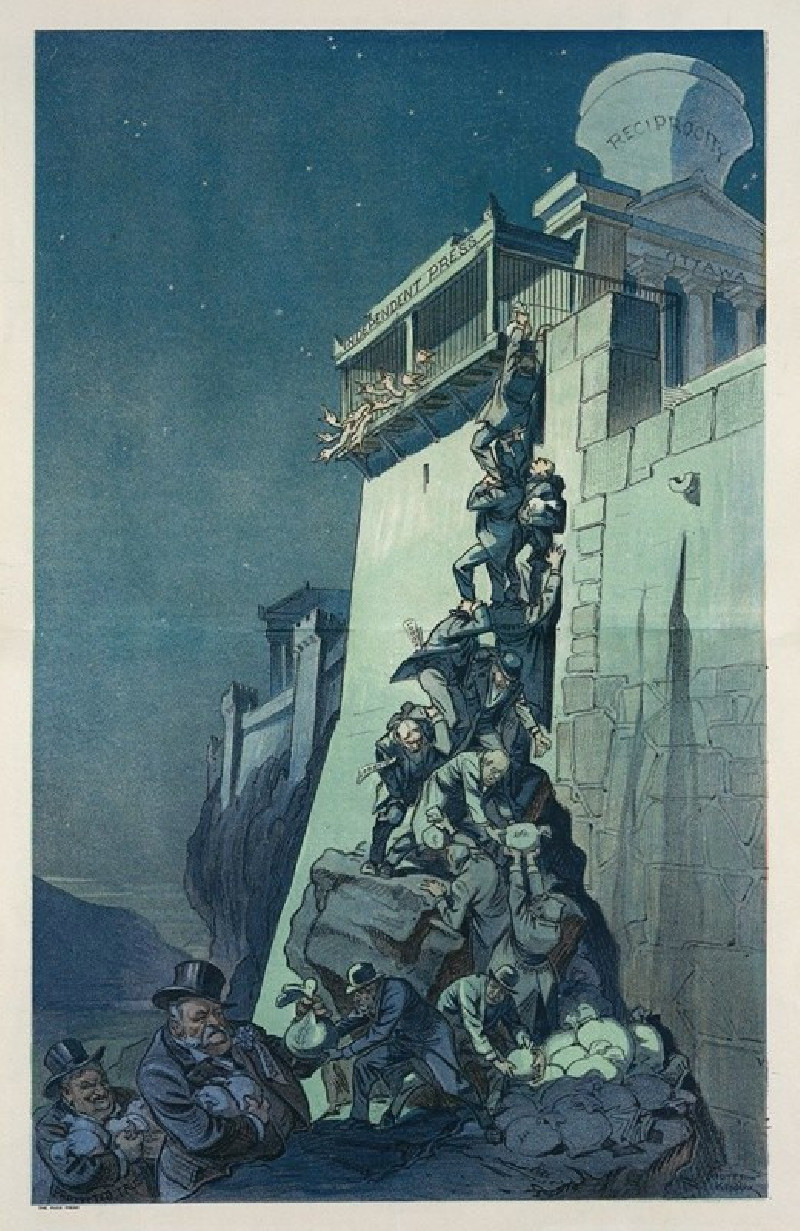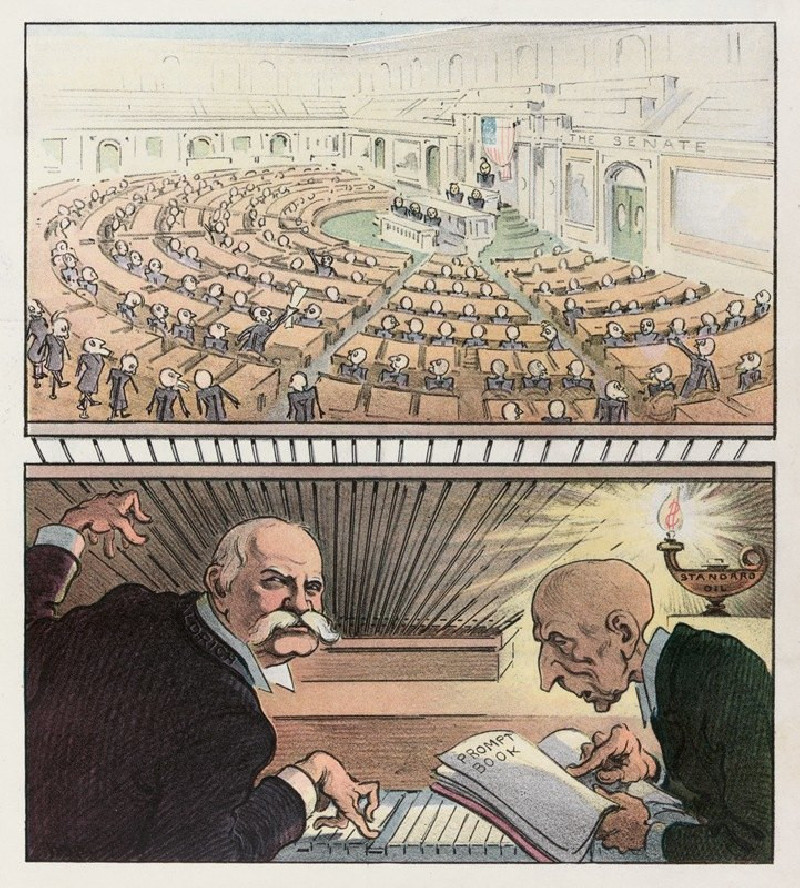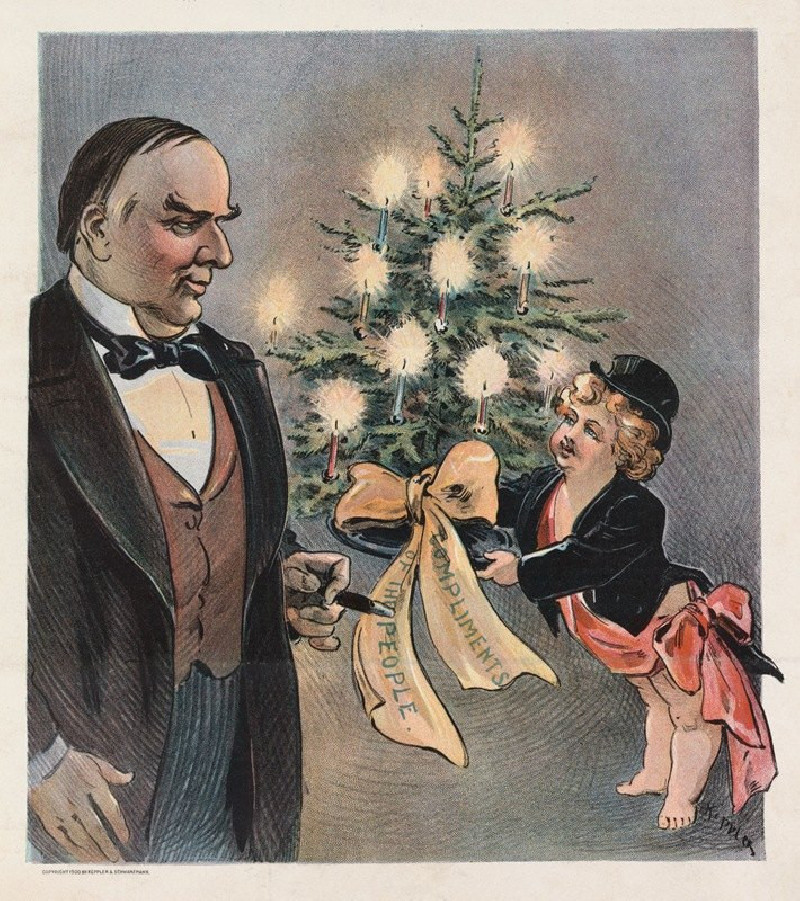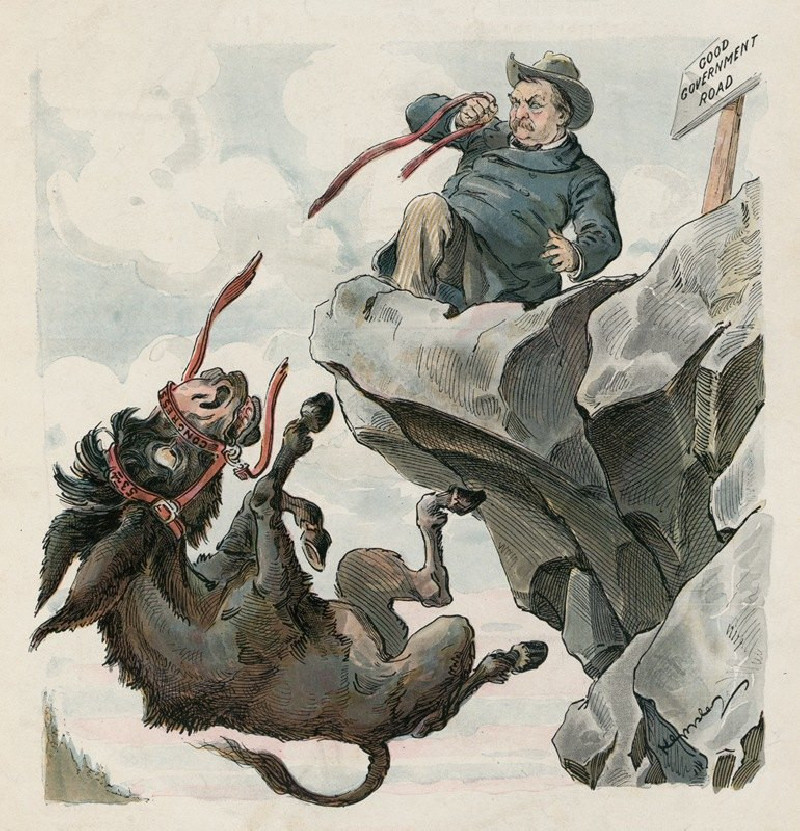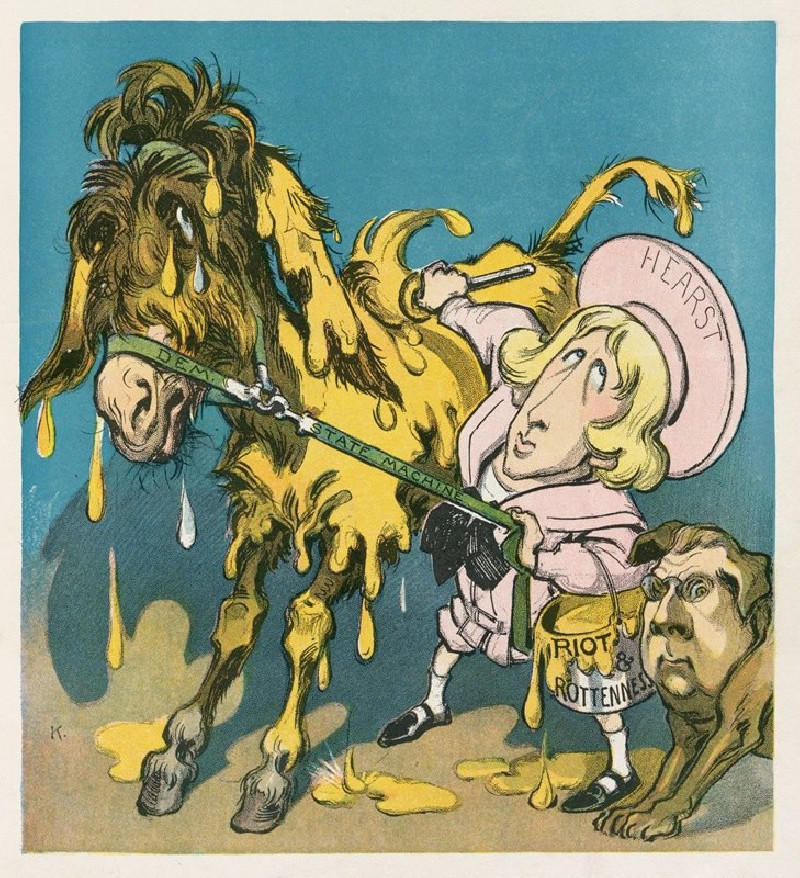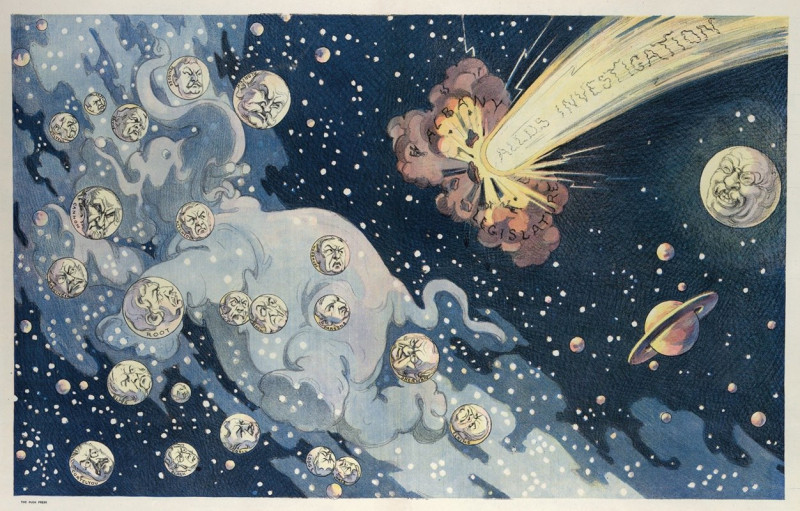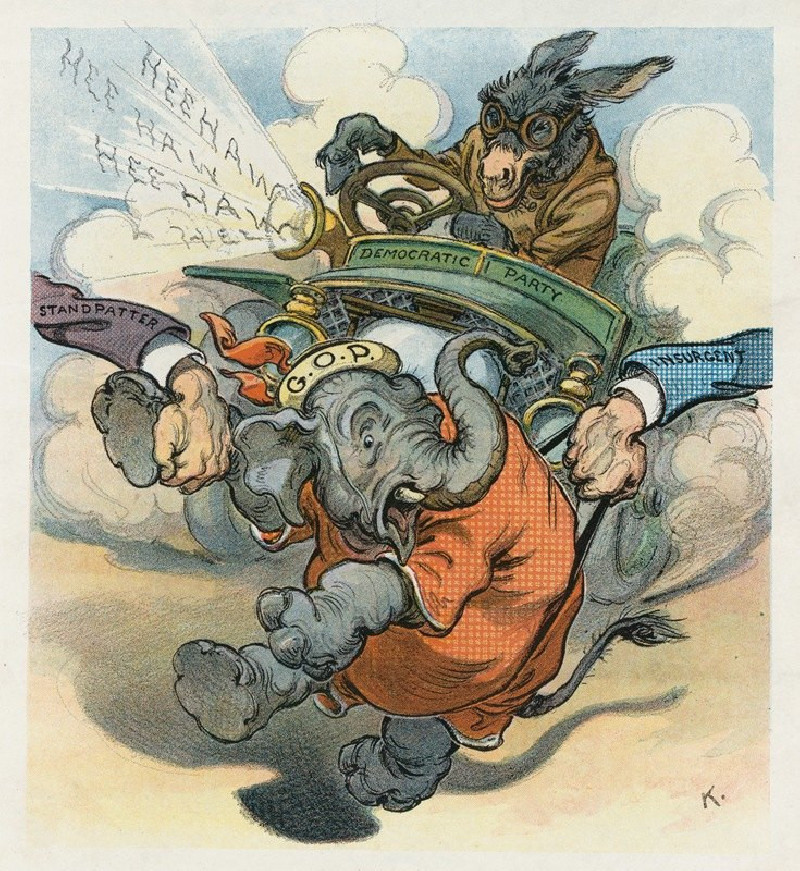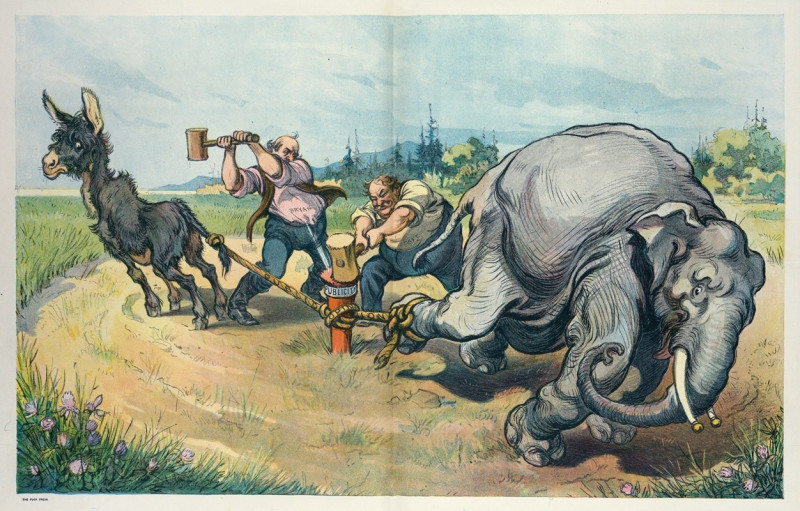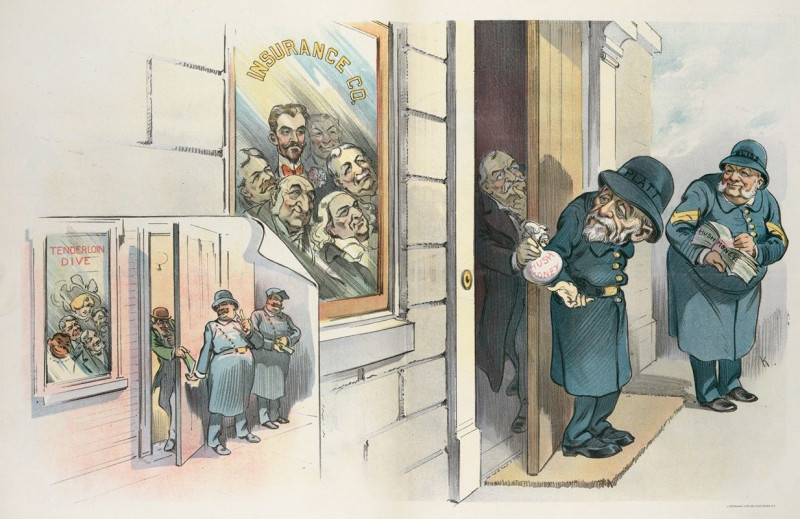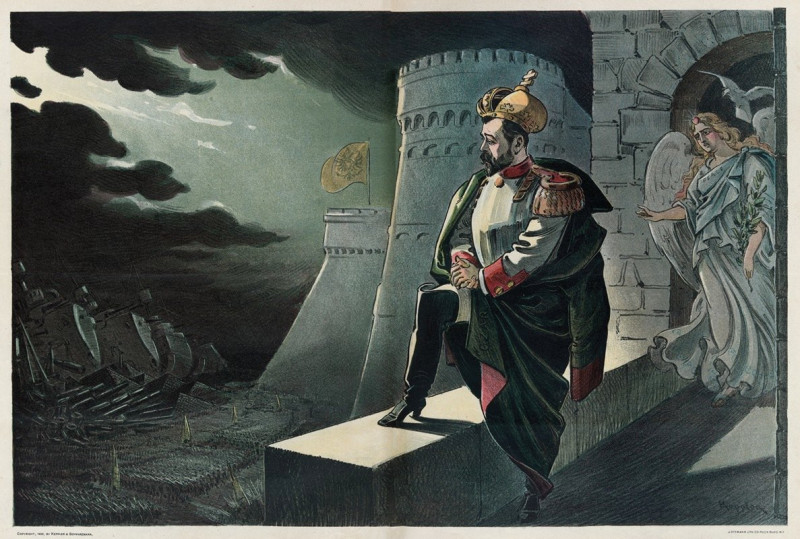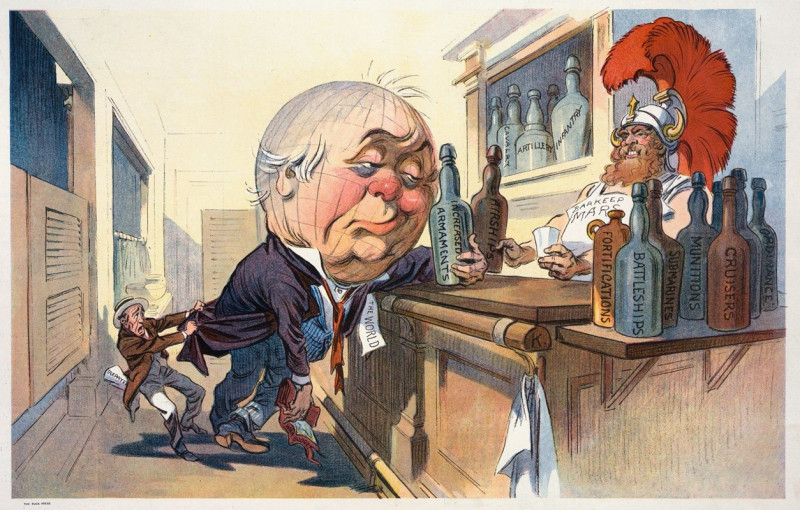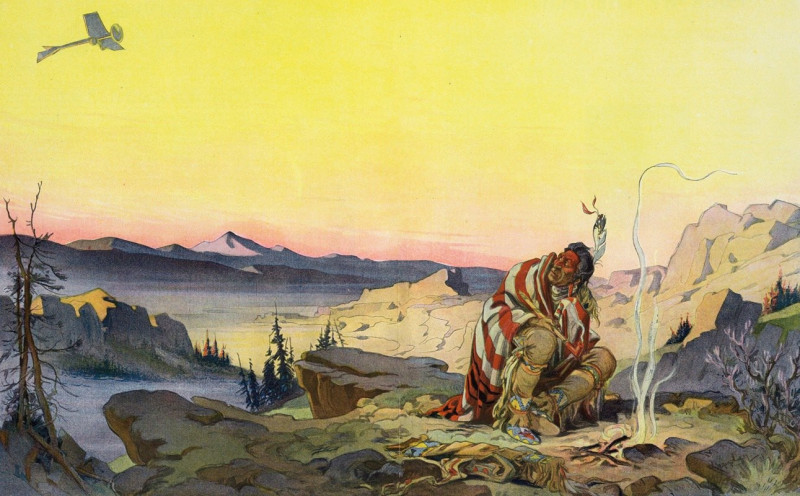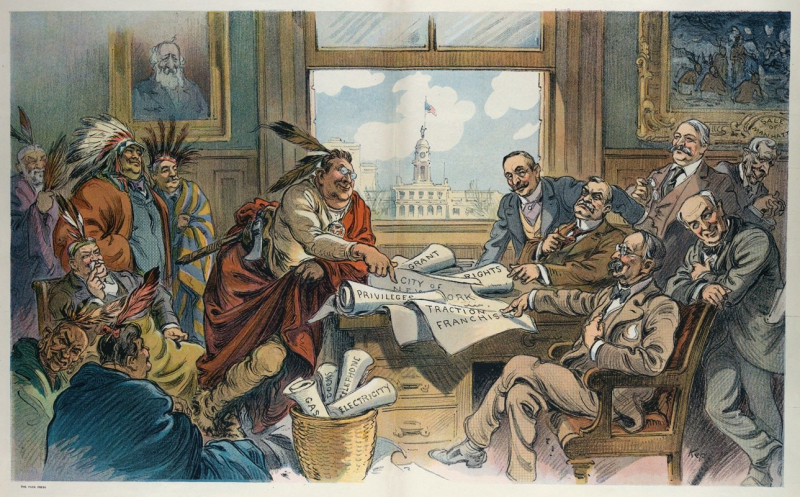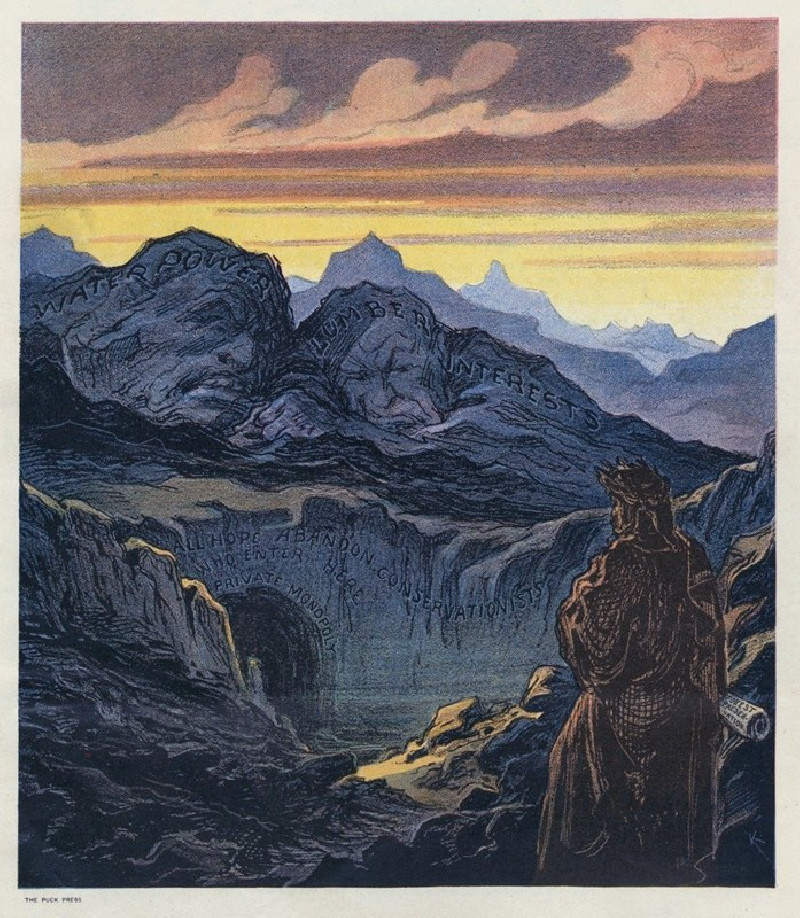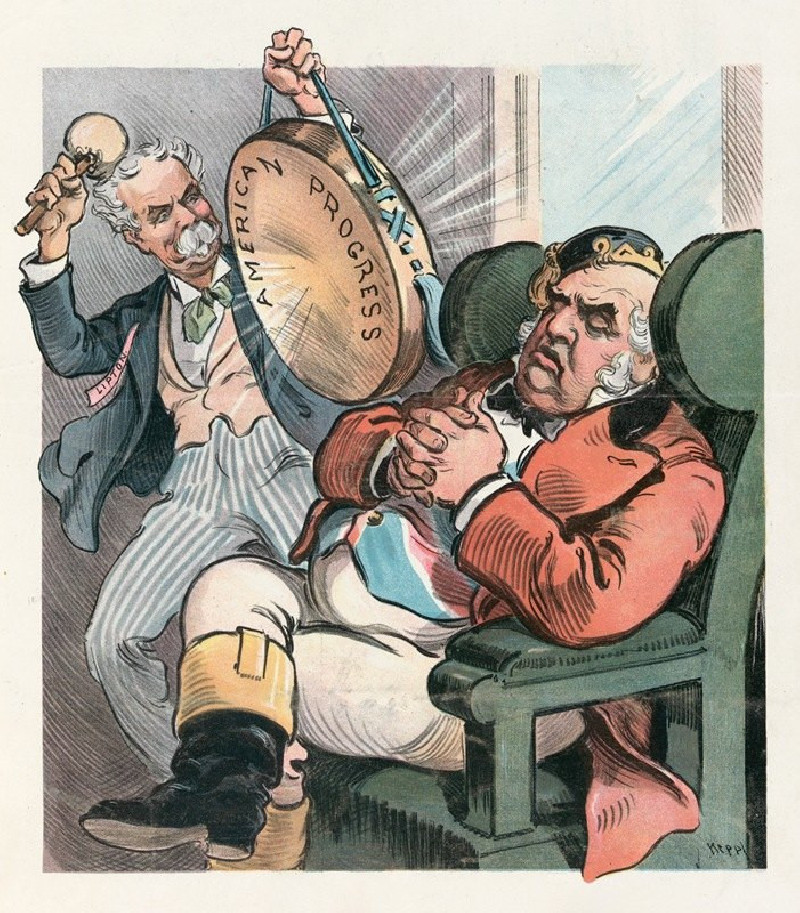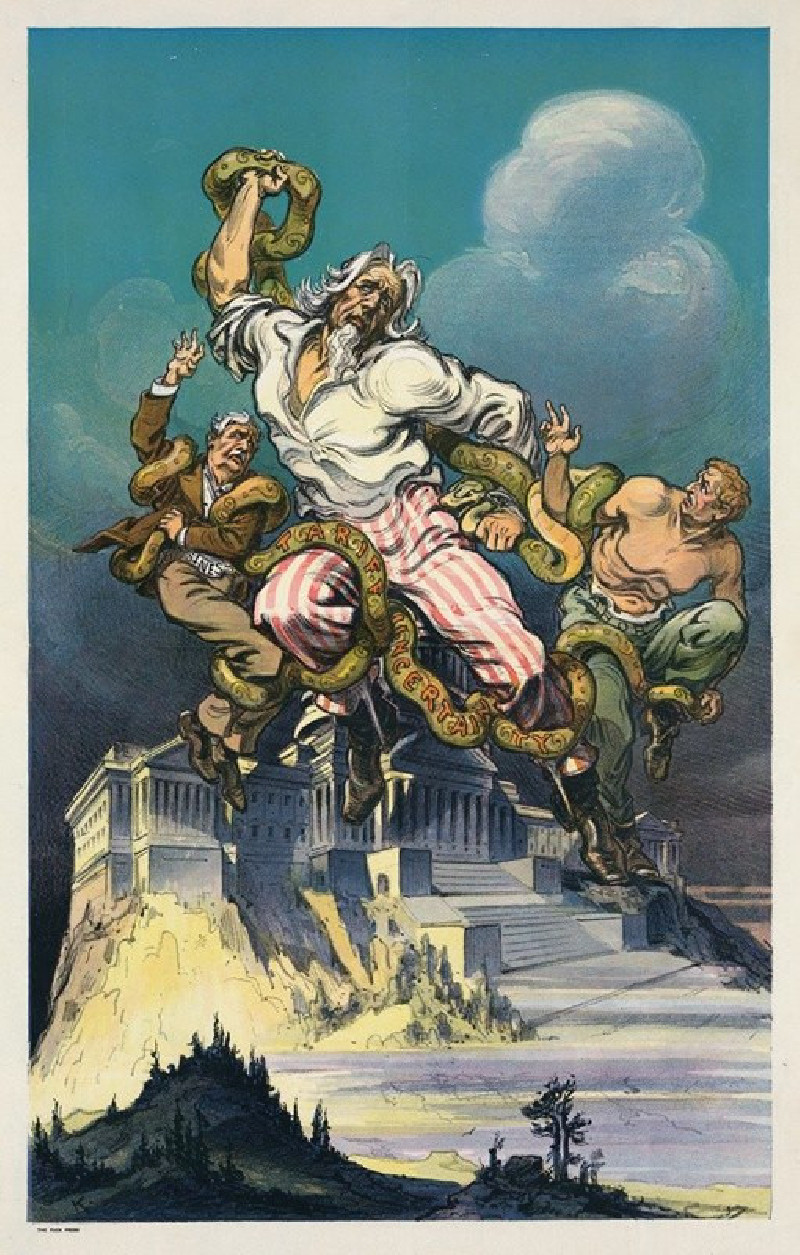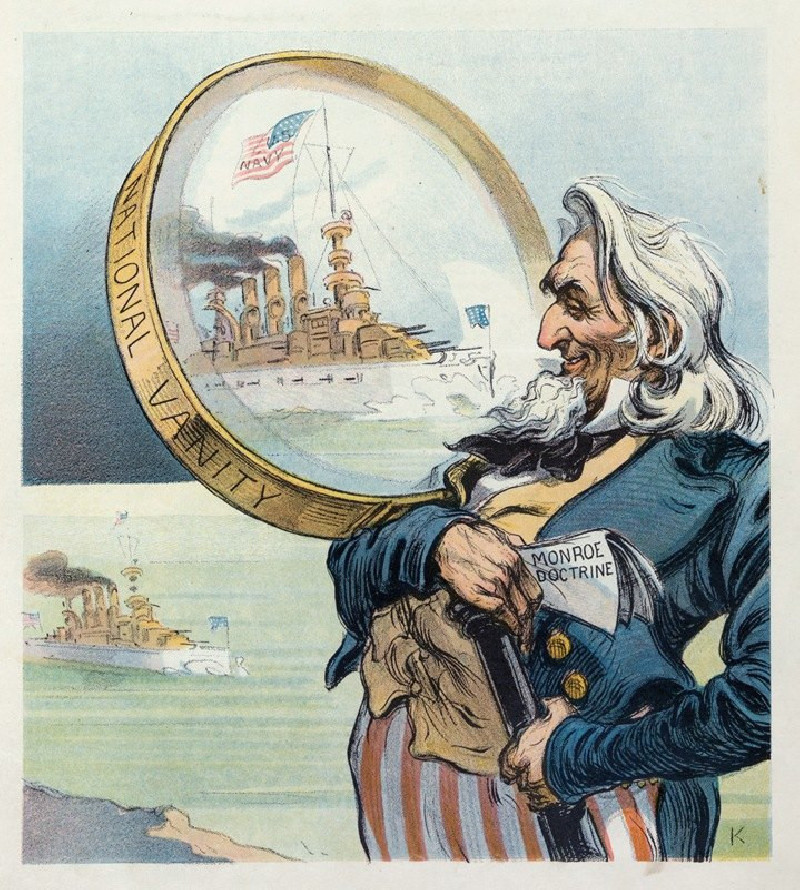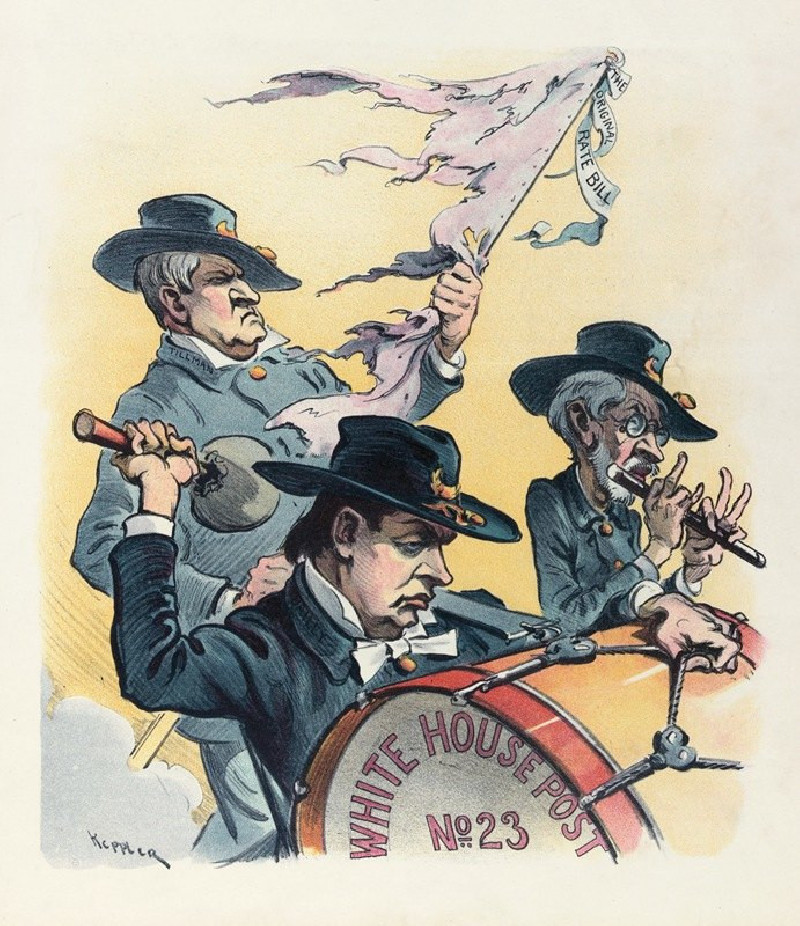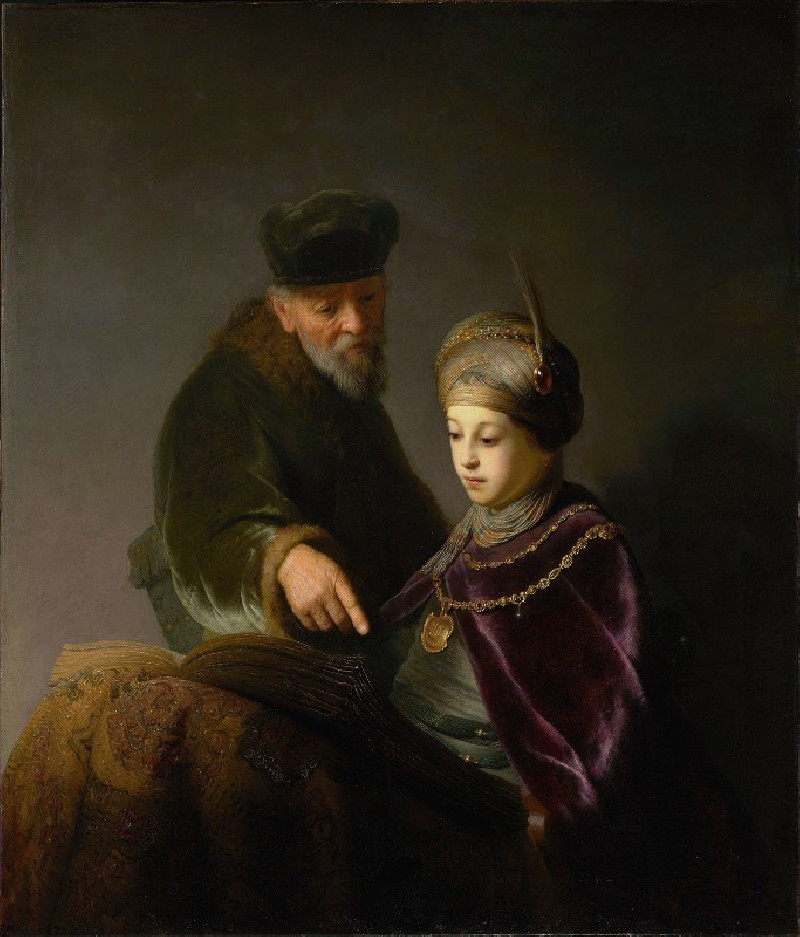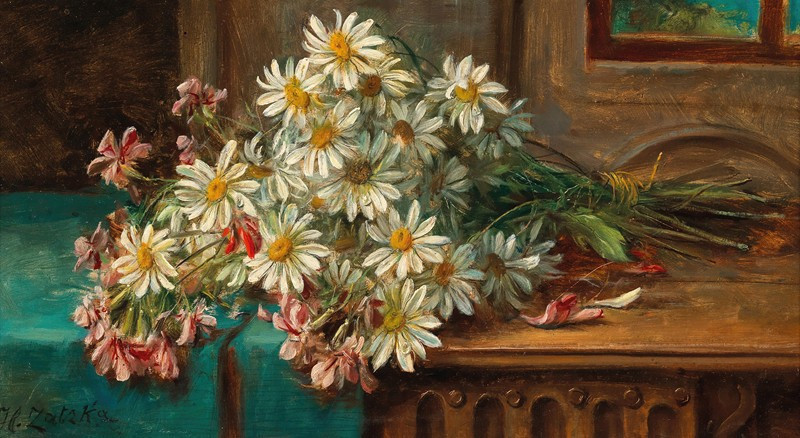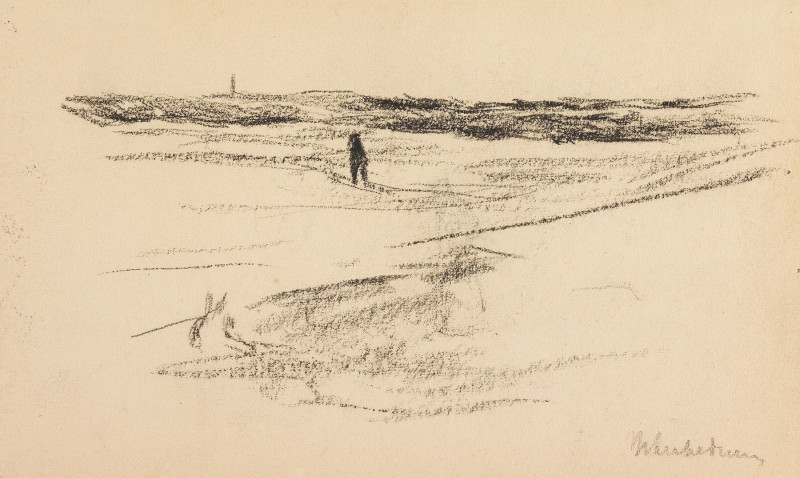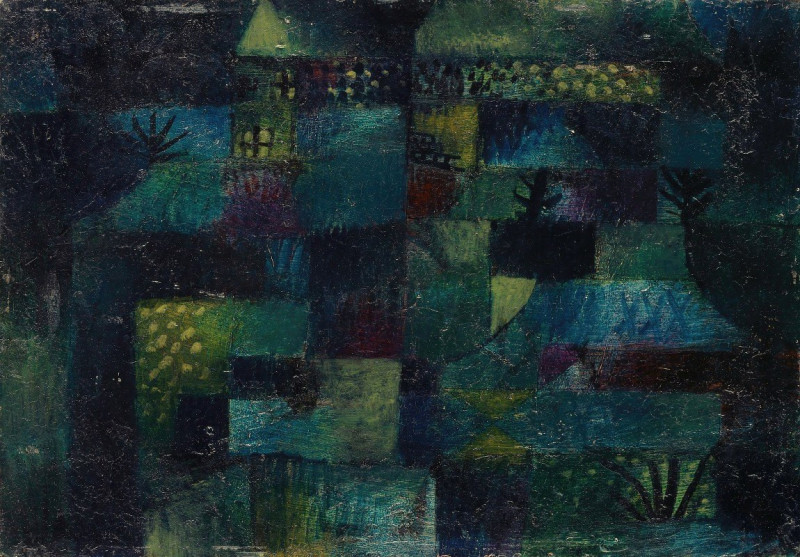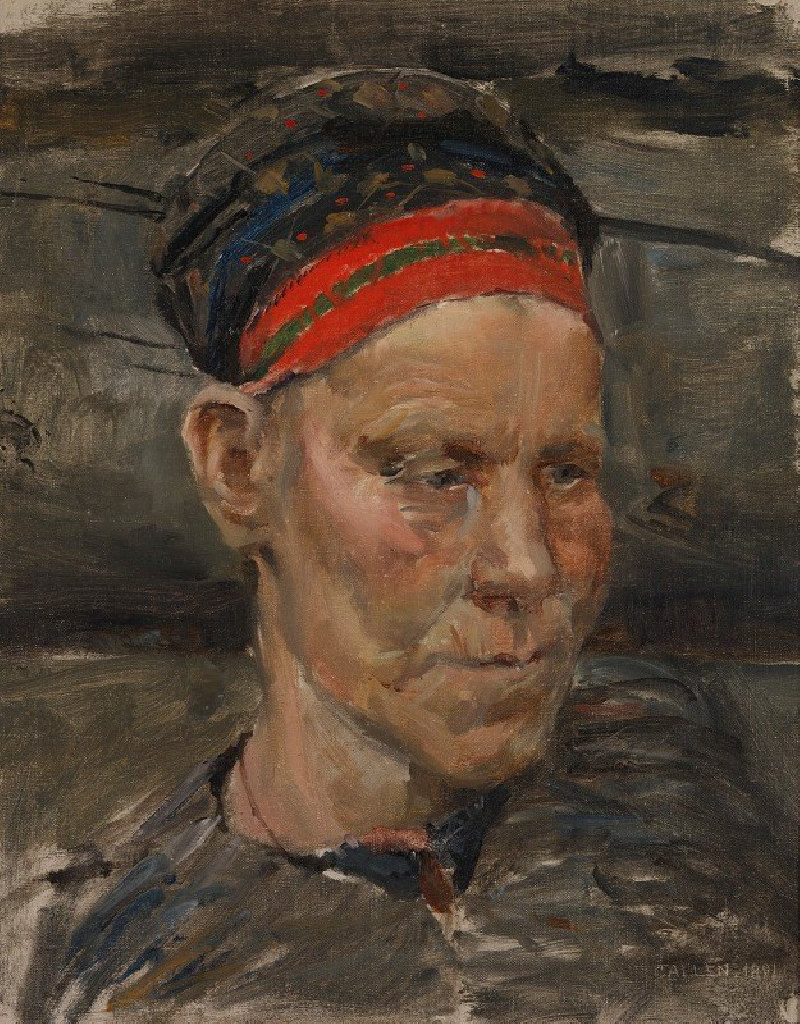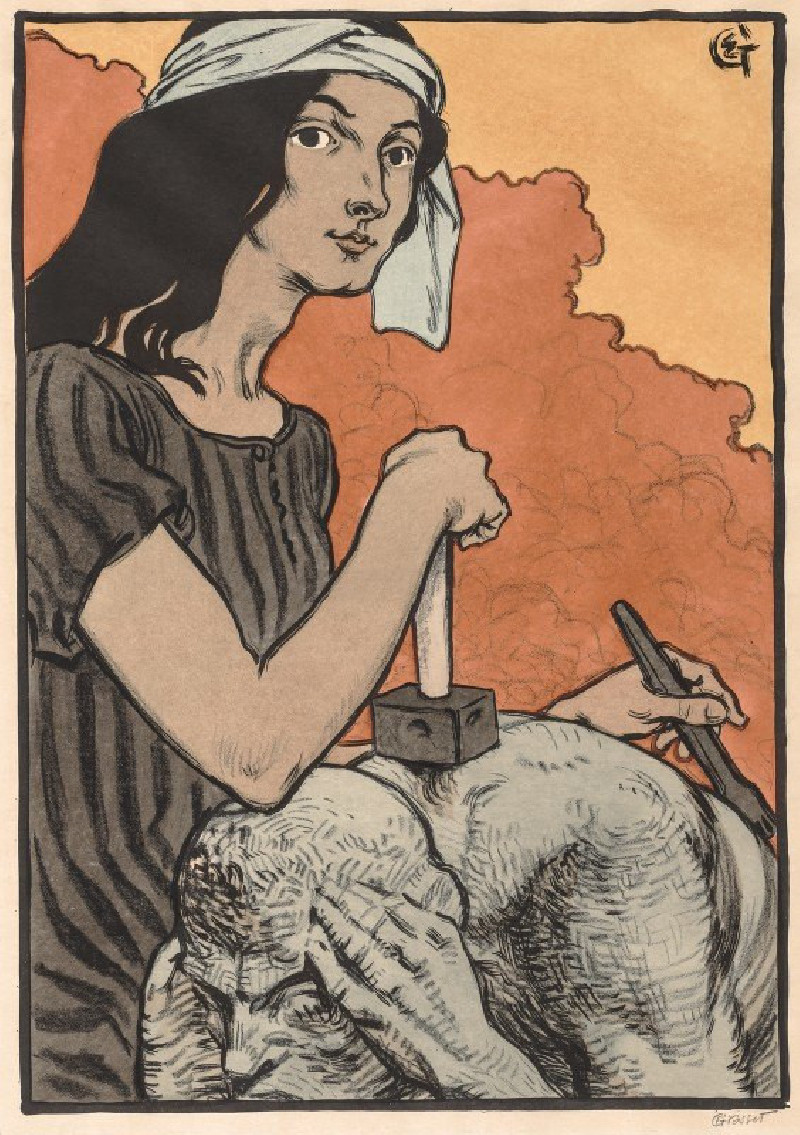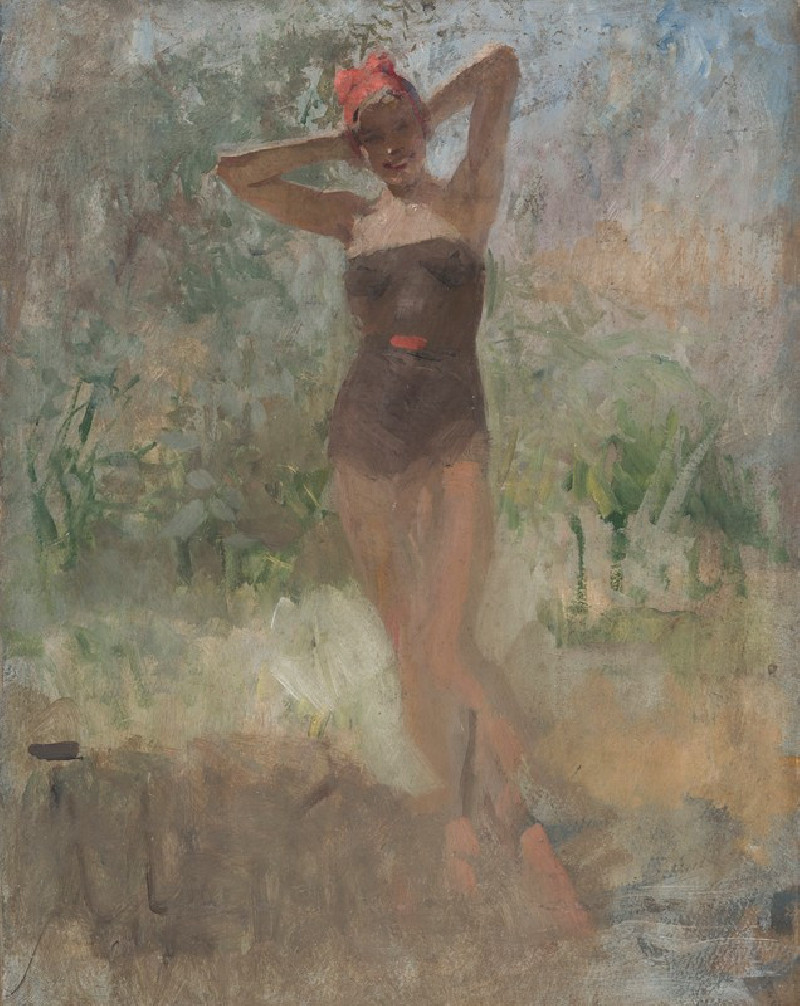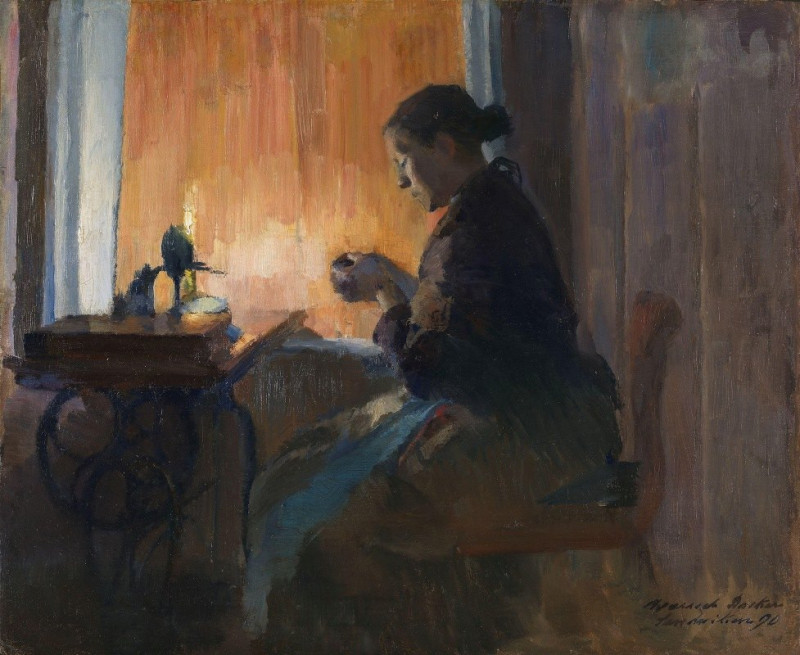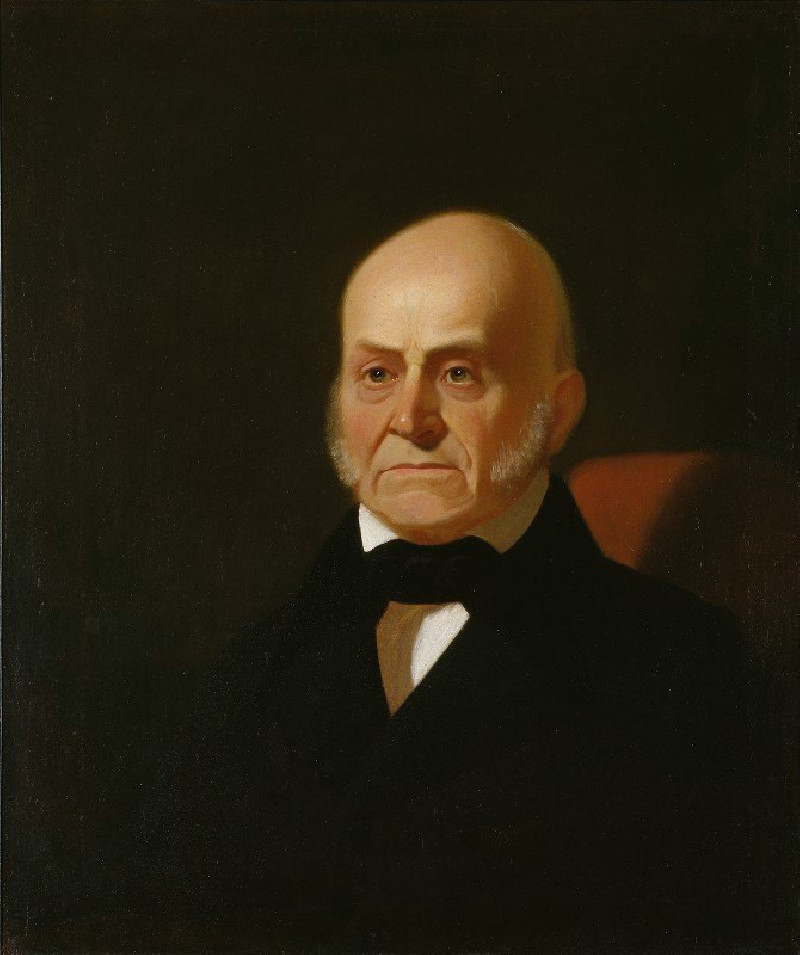The two drummers (1899)
Technique: Giclée quality print
Recommended by our customers
More about this artwork
"The Two Drummers," crafted by the esteemed artist Udo Keppler in 1899, is a satirical illustration that sharply critiques political and national dynamics of the era. This vibrant work features two caricatured figures, each representing their respective nations, depicted in mid-conversation on a bustling city street.On the left, we see an elderly man equipped with papers and books labeled with various geopolitical terms like "America," "Europe," and specific references to "Orders" and "Borders," clearly indicating his engagement in international diplomacy or governance. His attire, a traditional coat and hat, along with his ragged appearance, suggest he might be playing the role of a somewhat disheveled, yet cunning, old-world European political figure.To the right stands a younger, stout man, flamboyantly dressed in a suit adorned with the Union Jack, symbolizing Great Britain. He clutches a document titled "Orders," and his shocked expression, along with the artwork in his hand depicting "Asia" and "Africa," implies his surprise or dismay, perhaps at the geopolitical shifts or the challenges of maintaining an empire. His outfit is more modern and his posture somewhat defensive, illustrating the tension and competitiveness in the world political arena.The background, with flags and faint outlines of buildings with hints of the word "Order," serves as a subtle reminder of the pervasive nature of political and territorial ambitions during this period.Overall, Keppler’s illustration not only showcases the geopolitical tensions of the late 19th century but also uses humor and exaggeration to comment on the complexity and sometimes absurdity of international affairs.
Delivery
Returns
Udo J. Keppler, since 1894. known as Joseph Keppler, Jr., was an American political cartoonist, publisher, and Native American advocate. The son of cartoonist Joseph Keppler (1838–1894), who founded Puck magazine, the younger Keppler also contributed to cartoons, and after his father's death became co-owner of the magazine under the name Joseph Keppler. He was also a collector of Native American artifacts.

